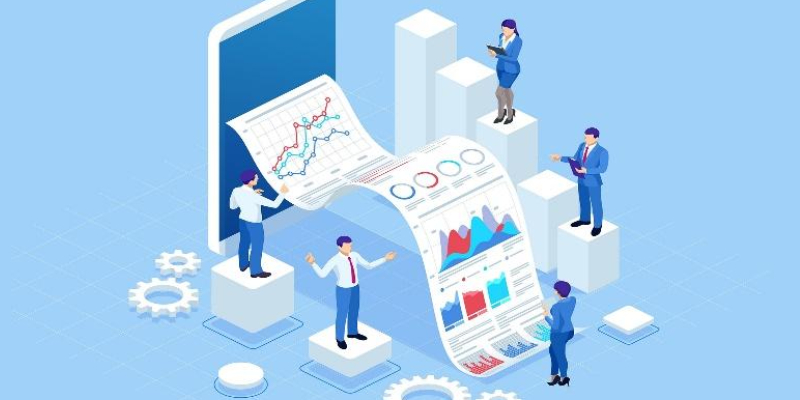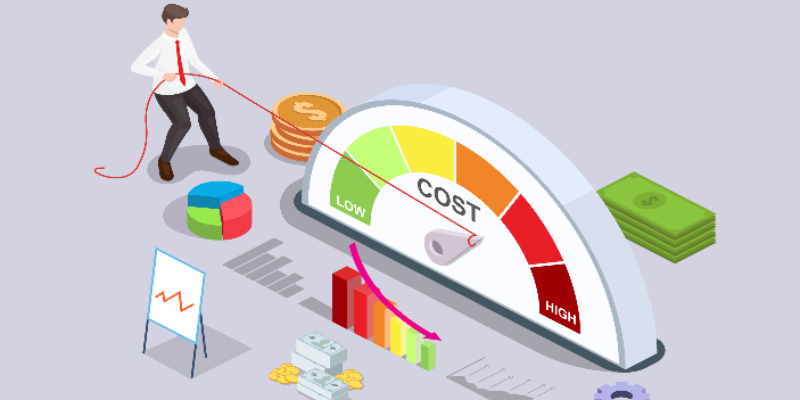What Is finance doing today?
In 2025, finance and business analytics include data management, risk assessment, budgeting, forecasting, decision-making, automation, technology integration, market analysis, compliance, performance monitoring, cost control, and asset management. Businesses depend on financial data to increase operational effectiveness, boost overall profitability, and make well-informed decisions. Financial professionals employ a variety of tools and technologies to assess historical patterns, forecast future events, and reduce possible risks. Finance and business analytics departments collaborate closely with other organizational divisions to match financial objectives with more comprehensive business plans.

Table of contents:
- What Is finance doing today?
- What is finance and business analytics?
- What is financial consolidation software?
- How does financial consolidation software help finance and business analytics?
- 5 Ways Finance and business analytics Is Revolutionizing Finance in 2025
- Conclusion
What is finance and business analytics?
The process of gathering and processing data, using statistical models, predictive analysis, market insights, performance evaluation, optimization strategies, decision-support systems, and trend identification are all included in the term “finance and business analytics.” By identifying trends and connections in huge datasets, it assists businesses in making data-driven decisions. Finance and business analytics includes descriptive analysis which looks at past data, predictive analysis which predicts future patterns and prescriptive analytics which makes recommendations for actions to maximize results. Utilizing sophisticated analytical methods gives businesses a competitive advantage and improves their capacity to react to shifts in the market.
What is financial consolidation software?
A technology that makes data aggregation, reporting frameworks, regulatory compliance, multi-entity consolidation, real-time financial insights and centralized financial reporting easier is financial consolidation software. By combining data from several corporate divisions and locations, financial consolidation software helps large businesses and multinational firms simplify intricate financial procedures. The program produces accurate reports for internal and external stakeholders, guarantees adherence to financial regulations and automates account reconciliation. Organizations can increase decision-making capabilities, decrease errors and promote transparency by centralizing financial data.
How does financial consolidation software help finance and business analytics?
Through data integration, financial correctness assurance, performance tracking, decision-making support, reporting standardization, risk assessment, automation and business intelligence enhancement, financial consolidation software facilitates finance and business analytics. It assists finance teams in accurately and consistently managing vast amounts of financial data. Real-time access to financial data is made possible by the software, which helps companies perform in-depth analysis, spot trends and make wise financial decisions. Financial consolidation software can also help organizations better comply with regulations and improve their overall financial control.
5 Ways Finance and business analytics Is Revolutionizing Finance in 2025
Processing data in real time
Real-time financial insights, quicker reporting, immediate data aggregation and automatic reconciliation are all made possible by finance and business analytics. Finance experts can keep an eye on transactions as they happen thanks to real-time processing, which shortens the delay between gathering data and making decisions. Businesses can evaluate their financial health, spot irregularities fast and react more nimbly to changes in the market. Access to up-to-date financial information enables businesses to enhance operational effectiveness and manage cash flow more effectively.
Planning and financial modeling
Future trend identification, market volatility assessment, risk mitigation and profitability analysis are all aided by planning and financial modeling. Businesses can develop models that predict revenue growth, estimate expenses and anticipate possible financial hazards by utilizing statistical approaches along with planning and historical financial data. These observations aid businesses in planning for better stability. By spotting profitable possibilities and reducing exposure to erratic markets, predictive analytics also improve investing decision-making.
Optimization of Investments
Portfolio analysis, asset allocation, market pattern recognition and cost effectiveness are all components of investment optimization. Organizations can effectively deploy resources with the use of finance and business analytics solutions, which offers comprehensive insights into investment performance. Businesses are able to assess the profits and risks of various investment options and modify their portfolios as necessary. Effective capital allocation and increased profitability are two benefits of data-driven investment strategies. By doing financial due diligence and identifying possible synergies, investment optimization also aids mergers and acquisitions.
Reporting and regulatory compliance
Standardized paperwork, automated compliance checks, financial governance and risk reduction are all made easier by finance and business analytics. Organizations must make sure that local and international reporting standards are followed as financial regulations are always changing. Businesses may monitor transactions for questionable activity, track regulatory obligations and produce correct financial reports with the aid of analytics-driven compliance technologies. Automation lowers the possibility of human error and guarantees that businesses follow regulations. Businesses can effectively fulfil audit standards and preserve financial transparency with the help of advanced reporting capabilities.
Expense and cost control
Resource allocation, overhead control, expense tracking and operational efficiency are all components of effective cost and expense management. Businesses may optimize budget allocations, find cost-saving opportunities and examine expenditure trends with the use of finance and business analytics. Finance teams are able to evaluate cost structures, track expenditures in real time and put measures in place to cut back on wasteful spending. Businesses can also optimize procurement strategies, streamline operational procedures and negotiate better prices with vendors thanks to cost analytics. By continuing to control expenses in a disciplined manner, organizations can attain long-term financial sustainability.
To conclude, In 2025, finance and business analytics are revolutionizing financial processes by promoting data-driven decision-making, strengthening corporate strategy, increasing market adaptability, and guaranteeing financial stability and efficiency. Businesses will have a competitive edge in the ever-changing corporate finance sector if they use advanced analytics. The ability to evaluate intricate financial data, optimize investment plans, and uphold regulatory compliance is further strengthened by the integration of finance and business analytics with financial consolidation software. Finance professionals can improve financial performance, reduce risks, and promote long-term company success by embracing finance and business analytics.

